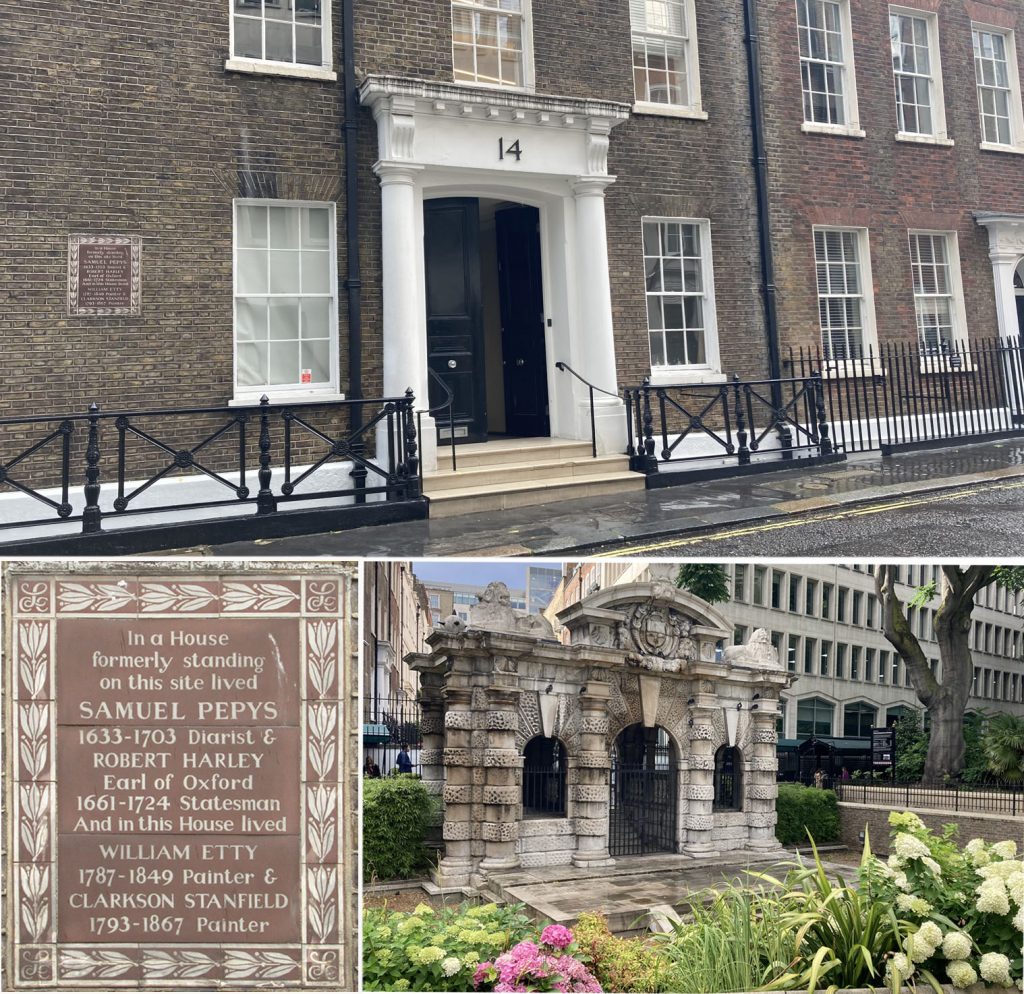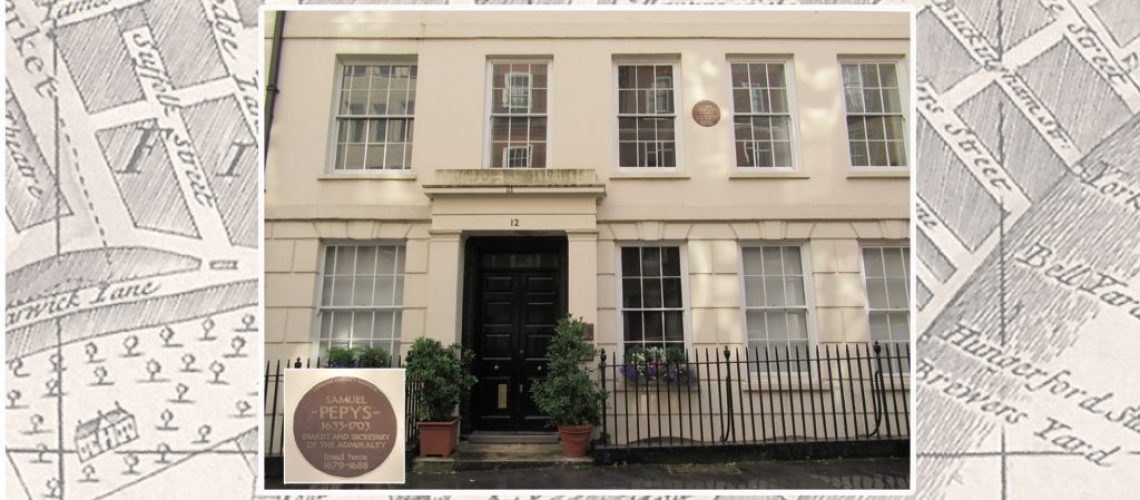Take a stroll down Buckingham Street with David Mullany to check out the view from Sam’s 17th century home office and learn about the street’s other illustrious residents
Working from home is nothing new. Samuel Pepys did just this from Buckingham Street when he was at the height of his career. It was a far superior base to his former home – the Tower of London – where he’d been imprisoned in 1677 on suspicion of collaborating with Catholics and the French, losing his job and home in the process.
On his release, with nowhere to live, he was invited by his friend William Hewer to move into No 12. If you’re lucky enough to visit, go down to the lower ground floor and you’ll see an old water tank in a tiny courtyard with the initials ‘WH’ on. Pepys’s decade at this now cream stuccoed terrace saw him build his famous library of 3,000 books and manuscripts that are now in Magdalene College, Cambridge.
After a fire scare, Pepys moved into the end house, No 14. It was indeed a pleasant setting, next to York Watergate, overlooking the river and with a strip of garden in front, planted with trees.
Social climber
The gate was the entrance to York House, developed originally by the Bishop of Norwich. In 1556 it became the townhouse of the archbishops of York and was later acquired by George Villiers, 1st Duke of Buckingham, known as ‘the handsomest man in England’. It was he who added the water gate.
Buckingham was the ultimate social climber, albeit based on hard work and expertise, but helped by becoming a favourite of James II. But his luck ran out. After initially advocating peace with Spain and accompanying the future Charles I to Madrid in an attempt to secure the hand of Princess Maria of Spain, he led an unsuccessful operation against Spain and France. This incurred the enmity of the Navy and, in particular, that of his assassin, Lieutenant John Fenton, who thrust a twopenny dagger into his side.
Fact and fiction compete for plausibility: Buckingham also appears in Alexander Dumas’s Three Musketeers, visiting the French court of Louis XIII where he relishes the challenge of seducing the French Queen, Anne of Austria.
His son, the 2nd Duke of Buckingham (also called George Villiers), was left homeless, growing up in exile with the future Charles II. He later struck out on his own to marry the daughter of the Roundhead military leader, Thomas Fairfax – not the ideal way to remain on good terms with his childhood friend. It didn’t prevent him, however, from re-establishing cordial relations with Charles after the restoration in 1660 and York House was soon returned to him.
Buckingham eventually lost favour and moved to Yorkshire, selling York House for redevelopment on condition that all the resulting streets were named after him, including ‘Of Alley’. If only modern day vanity projects came so cheaply.
A crowded house
So, returning to No 14, a plaque commemorates three lives in addition to that of Samuel Pepys. Fans of the film, The Favourite, might be surprised that the Queen’s rather ridiculous First Minister, Robert Harley, Earl of Oxford and of Mortimer, and owner of vast tracts of land including Wigmore Castle in the Welsh Marches, also lived here. He was a consummate politician and another avid collector of books. He lived here from 1703 to 1714, and it was his son who initiated the development of the area north of Oxford Street and whose substantial book collection was acquired by the British Library. No 14 is now called the ‘Harleian’.

Next on the plaque is William Etty, a 19th century painter who achieved fame for painting Victorian nudes. He is commemorated in his home town of York by a statue in front of the art gallery. In contrast, his near contemporary, Clarkson Stanfield, also on the plaque, was maybe the second best painter of marine scenes after JMW Turner, and said by Charles Dickens to be ‘the soul of frankness, generosity and simplicity. The most genial, the most affectionate, the most loving and the most lovable of men.’
So maybe not a surprise that a certain Dickens character (David Copperfield) moved into digs overlooking the river in a certain street…Yes, you guessed it – Buckingham Street.
Opposite no.14 is a more modern block on the site of what was no.15 and possibly the home for a short while of Dickens himself. It was occupied (1804-17) by William ‘Strata’ Smith, the self-taught geologist who mapped the layers of rocks and soils throughout Britain. If he is not already your hero, then look him up. A remarkable man for a remarkable street … on so many different levels!
David Mullany, Walking London History, https://walkinglondonhistory.com; info@walkinglondonhistory.com
• See also Sam Pepys’ brilliant career

